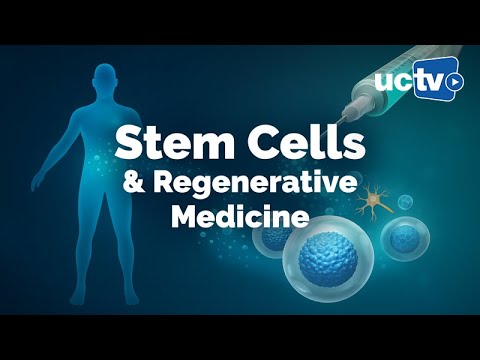Have you ever wondered if your body could heal itself more effectively, without the need for invasive surgeries?
Orthobiologics might just be the answer to this modern medical marvel. Welcome to the world of regenerative medicine, where the body’s natural healing process is supercharged using cutting-edge treatments that leverage biological substances.
Imagine accelerating your healing process and reducing your recovery time with therapies that are minimally invasive and have fewer complications.
Explore the fascinating realm of orthobiologics and discover how it’s changing the game in orthopedic and orthopaedic care.
What Are Orthobiologics?
Definition
So, what exactly are orthobiologics?
Orthobiologics are substances that are naturally found in your body and used to promote healing in musculoskeletal injuries. These include components like growth factors, stem cells, and platelet-rich plasma (PRP).
Essentially, these are the body’s natural repair agents, which, when harnessed correctly, can significantly improve recovery outcomes.
Components
Let’s break down the key players in the world of orthobiologics:
- Growth Factors: These are proteins that play a crucial role in regulating a variety of cellular processes, including cell growth and division. Think of them as the body’s natural stimulants that promote healing and regeneration.
- Stem Cells: Often referred to as the body’s raw materials, stem cells have the remarkable ability to develop into many different cell types. They can be used to repair and replace damaged tissues.
- Platelet-Rich Plasma (PRP): Derived from your own blood, PRP is rich in platelets and growth factors that can accelerate the healing process.
Here’s a quick comparison of the key components:
| Component | Source | Key Function |
|---|---|---|
| Growth Factors | Blood, Bone Marrow | Stimulate cell growth and healing |
| Stem Cells | Bone Marrow, Adipose Tissue | Develop into various cell types |
| Platelet-Rich Plasma (PRP) | Blood | Enhance tissue repair and regeneration |
Types of Orthobiologic Treatments
Stem Cell Therapy
Stem cell therapy is like giving your body’s repair system a boost. Stem cells are extracted from sources such as bone marrow or adipose tissue, then processed and reintroduced into the body. This therapy is particularly useful for cartilage repair and treating osteoarthritis.
Applications
Imagine having chronic knee pain due to arthritis, where traditional treatments like corticosteroid injections only offer temporary relief. Stem cell therapy can be a game-changer by actually repairing the damaged cartilage and offering a more permanent solution. It’s like fixing the root cause rather than just applying a band-aid.
Platelet-Rich Plasma (PRP)
PRP is another exciting development in orthobiologics. It’s derived from your own blood, which is spun in a centrifuge to concentrate the platelets and growth factors. This platelet-rich plasma is then injected into the affected area to accelerate healing.
Applications
PRP injections are commonly used in sports medicine to treat injuries such as rotator cuff tears, lateral epicondylitis (tennis elbow), and chronic tendon injuries. Athletes often rely on PRP to get back in the game faster. Just think of it as giving your body an extra boost to help it heal more quickly.
Bone Marrow Aspirate Concentrate (BMAC)
BMAC is another powerful orthobiologic treatment where cells are taken from the bone marrow and concentrated. This concentrate is then injected into the affected area to promote healing and regeneration.
Applications
BMAC is frequently used in orthopedic procedures like spinal fusions and to treat a variety of orthopedic conditions. For instance, if you have a degenerative disc disease, BMAC can help in regenerating the damaged tissue and potentially avoid surgery.
How Orthobiologics Work
Mechanisms of Action
Orthobiologics work by harnessing the body’s innate healing capabilities. When growth factors, stem cells, and PRP are introduced into an injured area, they help to reduce inflammation, stimulate new tissue growth, and accelerate the healing process. It’s like having a team of superheroes come to the rescue of your injured tissues.
Here’s a simple graph illustrating the typical timeline of recovery with traditional treatments versus orthobiologic treatments:
Traditional Treatments (pink) 6-12 months
Orthobiologic Treatments (blue) 3-6 months

Benefits of Orthobiologics
Minimally Invasive
One of the biggest advantages of orthobiologics is that they are minimally invasive. Unlike traditional surgeries that require long recovery times and come with significant risks, orthobiologic treatments are typically done through simple injections. This means less downtime and fewer complications.
Reduced Recovery Time
By stimulating the body’s natural healing processes, orthobiologics can significantly reduce recovery time. Imagine being able to get back to your favorite activities in a fraction of the time it would normally take. That’s the power of orthobiologics.
Lower Risk of Complications
Since orthobiologics use substances derived from your own body, the risk of adverse reactions is minimal. There’s no worry about rejection or severe side effects, making it a safer alternative for many patients.
Challenges and Considerations
Regulatory Hurdles
Despite the promising potential of orthobiologics, there are still regulatory challenges to navigate. Clinical trials are ongoing to fully understand the effectiveness of orthobiologics, and regulatory bodies require rigorous testing before widespread adoption.
Cost and Accessibility
While orthobiologics offer incredible benefits, they can be costly. Not all insurance plans cover these treatments, making them less accessible for some patients. However, as the technology advances and becomes more commonplace, we can hope for reduced costs and greater accessibility.
Ongoing Research
The field of orthobiologics is still relatively new, and more research is needed to unlock its full potential. Scientists are continually exploring new ways to enhance these treatments and expand their applications. It’s an exciting time in regenerative medicine, with new discoveries on the horizon.
Future of Orthobiologics
Innovations on the Horizon
The future of orthobiologics is bright, with numerous innovations on the horizon. From advanced stem cell therapies to next-generation PRP formulations, the possibilities are endless. Imagine a world where orthopedic injuries are treated with just a simple injection and recovery times are drastically shortened.
Integration with Traditional Treatments
Orthobiologics are not here to completely replace traditional treatments but to complement them. For instance, combining physical therapy with PRP can lead to better outcomes for patients. It’s about finding the right balance and using all available tools to enhance patient care.
Conclusion
Orthobiologics represent a significant leap forward in the field of regenerative medicine. By harnessing the power of the body’s natural healing processes, these treatments offer hope to those suffering from orthopedic conditions. Whether it’s stem cell therapy, Platelet-Rich Plasma (PRP), or BMAC, orthobiologics provide a safer, more effective alternative to traditional treatments. As research continues and new advancements emerge, we can look forward to even more exciting developments in this field.


